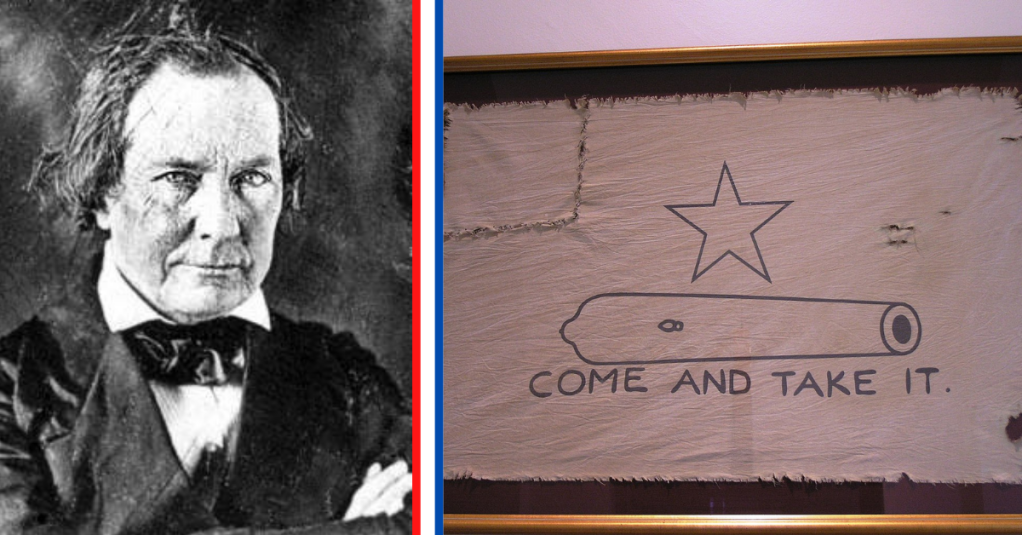

On April 20, 1836, the Texian Army was racing Mexican dictator Antonio Lopez de Santa Anna towards Lynchburg. The Alamo had fallen, and Gen. Sam Houston’s army of around 900 was the last hope for an independent Texas Republic. As the two sides made camp near Buffalo Bayou, two skirmishes took place.
Only 500 yards apart, they could likely see each other, but Santa Anna had no idea how large Houston’s army was. While Houston hid much of his force in a wooded area, Santa Anna put his 700-man force in an open plain. Santa Anna had no idea that the Texians had captured a courier on the way and knew everything about his army.
When the skirmishes began, two things (besides open combat) happened. In the first skirmish, the Texians proved they could win against the Mexican forces. After the second, a volunteer private showed his skill and bravery – and maybe changed the course of the war.
The first skirmish saw the Texians use Ohio-made artillery to force Mexican dragoons to leave the battlefield. When the Texians brought their cavalry to the field, more dragoons returned. This skirmish didn’t go as well for the rebel forces.

Texian Gen. Thomas Jefferson Rusk had dismounted to reload his rifle when Mexican soldiers approached him on the field. He was surrounded by enemy troops without a weapon. Texian cavalry began to withdraw, seeming to leave Rusk behind. As the enemy approached, a rider on horseback galloped toward Rusk and helped the general escape capture.
As the same rider moved to depart the battlefield, he noticed a Texian cavalryman who was thrown from his horse while trying to withdraw. As Mexican troops approached him, the unknown rider helped that cavalryman escape too. His efforts were so daring, it’s said even the Mexican Army cheered for the rider.
The rider was Mirabeau Buonaparte Lamar, a former journalist and one-time Senator from Georgia who had come to Texas to meet his friend James Fannin after the deaths of his brother and wife. Fannin, a Texian rebel leader, had been massacred by Mexican troops at Goliad. Lamar volunteered in the Texian Army that same year.

Houston was also impressed by Lamar’s brave rescue of the two Texians. He was so impressed, in fact, that he dismissed the cavalry’s current commander for how he handled the skirmish, promoted Lamar from private to colonel, and gave Lamar command of the cavalry for the upcoming battle. It turned out to be a critical move.
Throughout the night, the Mexicans reinforced their positions with anything they could. 500 additional troops also arrived in the night, bringing the total number of Mexican forces to at least 1,200. Houston was now outnumbered, but when morning broke, he didn’t order an attack. In the night, he ordered the one bridge that would allow escape from the battlefield to be destroyed. It wasn’t until later in the day that Houston would form a line of battle, and by then, the Mexicans had let their guard down. Many were literally asleep at their posts because they had marched through the night with no food or rest.
Lamar, in command of the cavalry, was on the far right side of the line. He ordered a charge as soon as the Texian artillery opened fire and routed the Mexican left. Texian infantry broke the line and began charging the newly-constructed fortifications. The entire battle lasted 18 minutes until the Mexicans ran away. The cavalry cut off their retreat, and the Mexicans were slaughtered for hours.
Santa Anna barely escaped dressed as a private, only to be captured after his troops recognized him and called out to him. He would eventually negotiate the independence of Texas and Mirabeau Lamar would serve as the republic’s second president.
